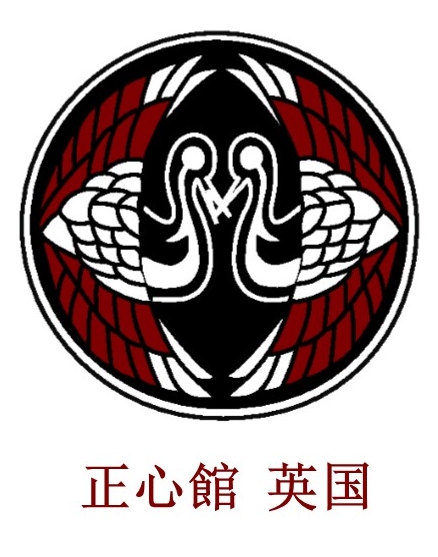K
KAE WAZA - Substitute or totally different techniques
KAICHO - President of school or business organization
KAITEN Turning/revolving
KAKE GOE - Yelling to get extra energy
KAKUDO - Angle
KAMAE - Posture, stance
KAMIZA NI REI Bow to Kamiza (gods)
KANCHO - Head of school (building, hall)
KARUMA - like Waki Gamae, blade horizontal
KASHIRA - Fitting at end of handle, end of handle
KASSO TEKI - Invisible opponent
KASUMI - Arms crossed over to hide technique (mountain mist)
KATA Shoulder/structured practice; form or pattern
KATAHABA - Measurement at thickest part of blade
KATANA - Same as Daito, mounted edge up
KATANA O MOTTE - Get your sword(s)
KATANA-MEI - The side of the blade with the signature
KATATE KIRI One handed cut
KATATE UCHI - One handed hit
KEIKO - Practice
KEIKO GI - Practice jacket
KEITO/TEITO SHISEI To stand with the sword held in the left hand on the left hip
KEN - Sword, usually refers to the straight double edged type
KENDO - The way of the sword, already drawn
KENSEN - Pressure from the sword, especially the tip
KESA - Lapel/part of monk's costume hanging from left shoulder
KESAGIRI - Diagonal downward cut, a Kesa is a sash worn diagonally across the chest by Buddhist priest 150
KI - Spirit, energy, inner strength
KIAI Shout or focussed release of energy
KI KEN TAI ICHI - Spirit, sword, body, one
KIME - Sharpness of movement, positive end of cut or thrust, focus
KIMOCHI - Feeling, sensation
KIRI - Cut (Kiru: to cut)
KIRI AGE - Same as Gyaku Kesagiri
KIRI GAESHI - Large diagonal cut, sword finishing in Waki Gamae position. Different meaning to that found in Kendo, refers to partnered practice with attacker performing successive Yoko Men and defender blocking
KIRI KAESHI - This is continuous striking from right to left
KIRI KUDASHI - Finishing cut
KIRI OTOSHI - Dropping cut, straight down
KIRI TE - Grip that allows cutting action with blade
KIRI TSUKE cutting strike
KIRYOKU - Willpower
KISSAKI - Tip area, from Yokote to end
KISSAKI SIZES:
Ko Kissaki = small, Chu Kissaki = medium, O Kissaki = large
KIYOTSUKETE - Be careful
KIZA - Kneeling, but up on the toes
KODACHI - equivalent to SHOTO literally a small Tachi with the same fittings as a Tachi
KOGESA- Small form
KO HAI - junior student
KOIGUCHI - Scabbard mouth (literally carp's mouth)
KOJIRI - Fitting at end of Saya
KOKORO, SHIN - Mind
KOKYU - Breath, breath power/control
KOMI - Coming close or drawing near
KORYU - Old School or lineage indicating a history
KOGATANA Ko = small, Katana = blade/small knife carried in a pocket on the Saya
KOSHI - Hip
KOSHI ITA - Back plate on Hakama
KO SHINOGI - Shinogi line through tip area
KOTE - Wrist (forearm)
KOTO - Old sword, blades before about 1600
KUBI - Neck
KURIGATA - Knob for tying Sageo
KYOJUN - Standard, basic level
KYOSHI - Teaching title from ZNKR applicable from 7th dan
KYU - Student grade, from 5 to 7 up to 1, the highest
M
MA - Distance, space, interval (in time)
MAAI (MAWAI) - Mutual distance (in space)
MACHIGAI- Mistake
MAE - Forward
MAMORI TE - As for Seme Te, covering or protecting hand
MASSUGU - Straight ahead
MATADACHI - Split in side of Hakama
MAWARI - Swinging around
MAWATTE -Turn around
ME - Eye
MEI - Signature on tang
MEKUGI - Retaining peg
MEKUGI ANA - Hole through Tang
MENUKI - Decorative fixtures on handle
METSUKE - Gaze
MIGI - Right
MIMI - Ear
MIRU - Look
MI TORI KEIKO - Watching practice
MO MOTTE - More, e.g. Mo Oki, (bigger)
MOKUSO - Close the eyes, meditation
MON - Family crests worn on formal demonstration Montsuki
MONO UCHI 1/3 of blade nearest tip, cutting area
MONTSUKI - Wide sleeved top with Mons positioned on chest, sleeve and back
MOROTE TSUKI Two handed thrust
MOROTE UCHI - Two handed hit
MOTODACHI - Defender, teacher side in Waza practice
MUDANSHA - Members with Kyu grades
MUGA - No ego
MUNE - Back of blade/ Chest of a person
MUNE MACHI Notch for Habaki, at back of blade
MUNE TYPES: Mitsu Mune (3 surfaces), Maru Mune (rounded), Iori Mune (standard 2 surface)
MUNEN - No thought
MUSHIN, MUSO - No mind, no rationalization
MUSO JIKIDEN EISHIN RYU - A style or school of Iai, named after Hasagawa Eishin
MUSO SHINDEN JUSHIN RYU A style and school of Iai originally named after Hayashizaki
MUSO SHINDEN RYU - A style related to the above, originated by Nakayama Hakudo
Seishinkan Dojo
Glossary of terms
On this page and the following pages we have included an alphabetical listing of most of the Japanese words, terms or expressions you are likely to encounter. The list which is shown with the Japanese word leading first is not comprehensive, but does allow you to familiarize yourself with technical jargon that you will come across during practice.









